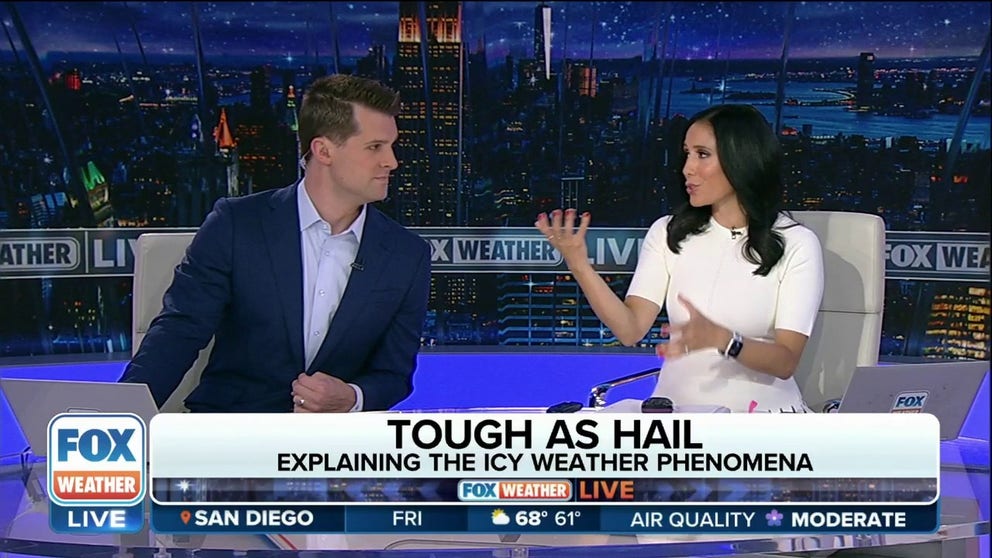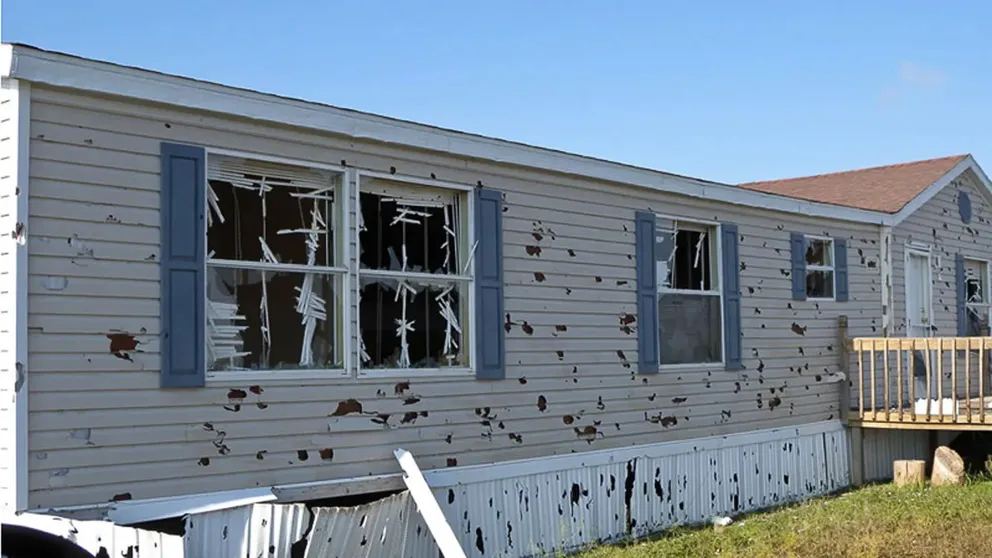7 things to know about hail
It’s the one frozen precipitation that can occur in the middle of a summer heat wave: Hail. Here’s a list of seven facts you may not know about those little (or maybe not so little) pellets of ice:
FOX Weather Explains: Hail
The FOX Forecast Center explains how hail forms during severe thunderstorms.
It’s the one frozen precipitation that can occur in the middle of a summer heatwave: Hail.
Here’s a list of seven facts you may not know about those pellets of ice:
1. They’re a hallmark of strong thunderstorms
Hail requires strong updrafts commonly found in the middle of thunderstorm clouds to form. Those upward winds continuously blow raindrops to the frozen upper reaches of a thunderstorm, where it will turn into a hailstone.
It will then begin to fall, collecting new raindrops on the way down until it reencounters those updrafts, and it’ll blow skyward, freezing this newly acquired water into another layer of ice.
2. Their eventual size depends on how long they can defeat gravity
The process will repeat, and the hailstone will continue to grow in size until it is heavier than the updraft can support, then it will fall to the ground.
3. Hail size is dependent on the strength of the updraft
According to the National Weather Service, upward wind speeds of 64 mph will support a hailstone as large as a golf ball, while a grapefruit-sized stone needs a 98-mph updraft.

4. The bigger they are, the harder they fall
Golf ball- to softball-sized hail can fall at speeds ranging from 44 to 72 mph, according to the National Weather Service, while larger stones can reach 100 mph.
5. The largest hailstone was the size of a volleyball
The largest hailstone recorded in the U.S. was 8 inches in diameter and 18.62 inches in circumference, found in Vivian, South Dakota, in 2010. It weighed nearly 2 pounds.
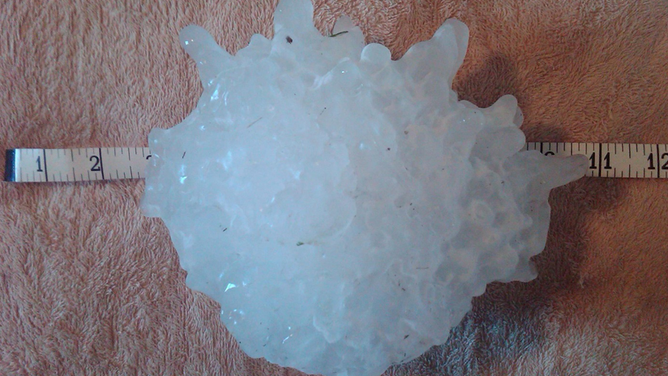
Record hailstone found in Vivian, South Dakota in 2010.
(NOAA / National Weather Service)
For comparison, a volleyball is also about 8 inches in diameter.
6. Hail causes $1 billion in damage each year
As you might imagine, getting pelted with millions of ice balls ranging in size from golf balls to grapefruits can cause some damage. From pummeling crops to blistering siding of homes:
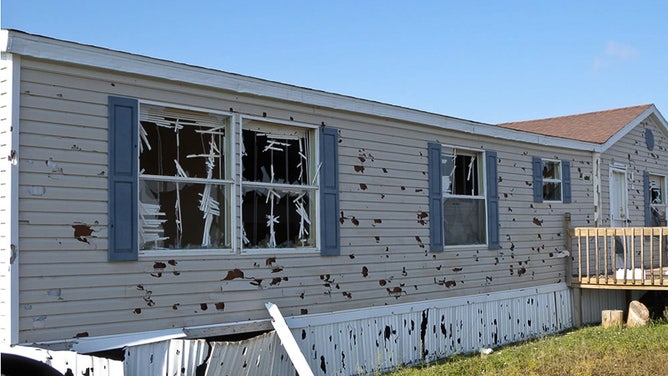
Hail damages the side of a mobile home.
(NOAA)
…and shattering windows, to leaving its mark (several times over) on vehicles that were outside.
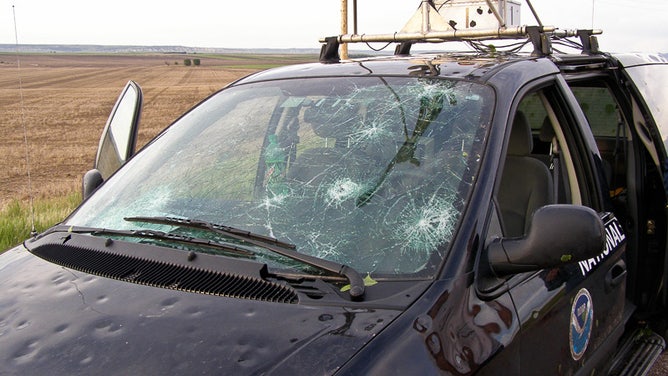
Hail damages a NOAA vehicle.
(NOAA)
All told, large hail causes an average of $1 billion in damage to property and crops in the U.S. each year.
7. Oklahoma is the large hail champion in the United States.
Central Oklahoma has reported the most 1-inch-plus hail events in the U.S. since 2015, with over 2,200. Rapid City, South Dakota, is second with 1853, while the northern Texas region was third at 1695.
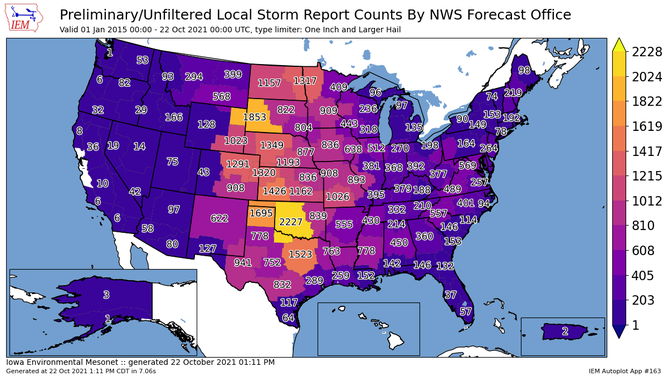
Number of hail reports of 1" or larger to each National Weather Service office since Jan. 1, 2015
Meanwhile, the San Francisco area hasn't had any reports of a such-sized hail event since at least 2015, while Seattle and Western Washington have had just one report.
7 things to know about hail
7 facts about hail including how it's formed and the damage it can cause.
